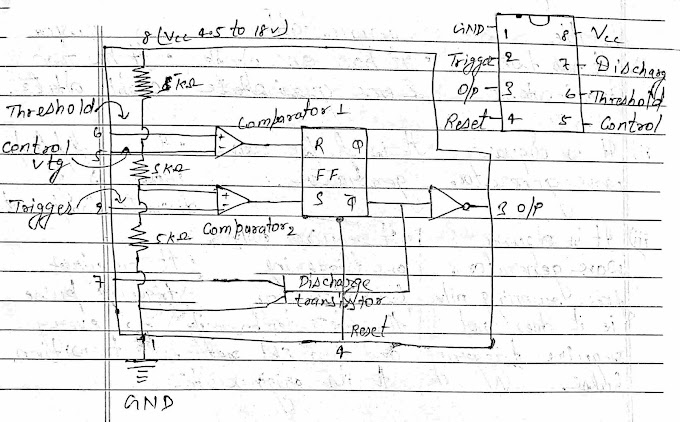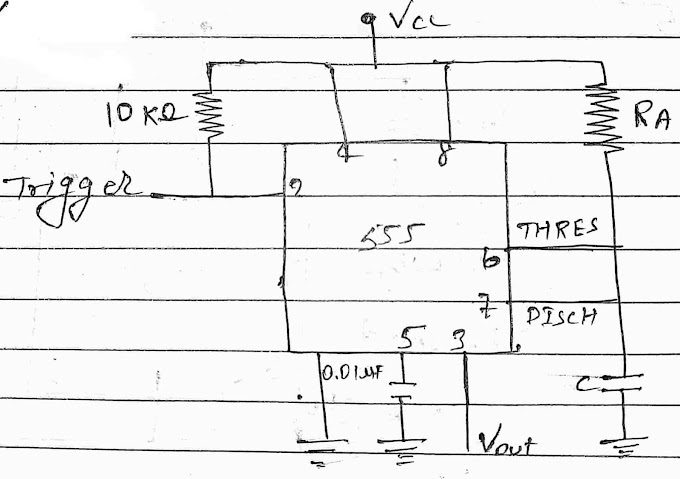Multivibrator circuit :-
Pulse generator circuit which produces a rectangular wave or square wave output is referred as multivibrator. Multivibrator is a circuit that change between two digital level on a continuous free running basis or demand from some external triggering source.
Types of multivibrator:-
- Astable multivibrator or free running multivibrator or square wave Generator.
- Monostable multivibrator or one-shot multivibrator.
- Bistable multivibrator or flip flop multivibrator.
1. Astable multivibrator :-
It is a oscillator which generate square waveform. It has two Quasi stable state and does not require any triggering pulse. Hence it is referred as free running multi vibrator. The stage keep on switching from one state to other at regular interval of time without application of any triggering pulse and work as an a closed loop feedback circuit.
- Astable multivibrator can maked by using transistor, op-amp ,logic gate.
- Astable multivibrator can maked by using transistor, op-amp ,logic gate.
2. Monostable multivibrator:-
Monostable multivibrator has two state. One is stable under steady state condition as output is fixed. It can be high or low. The other state is Quasi stable state. When the circuit is triggered by an external pulse it change its state i.e if it is in Lower state it goes to highest and vice versa. It depends upon the value of the component without with the circuit.The width of the output pulse depend upon the time duration for which the circuit remains in the Quasi stable state. In this circuit as one triggering pulse produces only one pulse but of different pulse breath it is referred as One Shot. As this circuit can generate a relatively long from narrow pulse it is also called as stretcher.
- Monostable multivibrator can maked by using transistor, op-amp ,logic gate.
- Monostable multivibrator can maked by using transistor, op-amp ,logic gate.
3. Bistable multivibrator:-
In this multivibrator both the state are stable and can exist in either of two State State. The stable multivibrator is always in one of the two state (stable) and is referred as flip flop it does not change its output state unless a suitable triggering pulses applied.The SR flip flop is bistable multivibrator.
We read in full detail in next tutorial post, thankyou







0 Comments